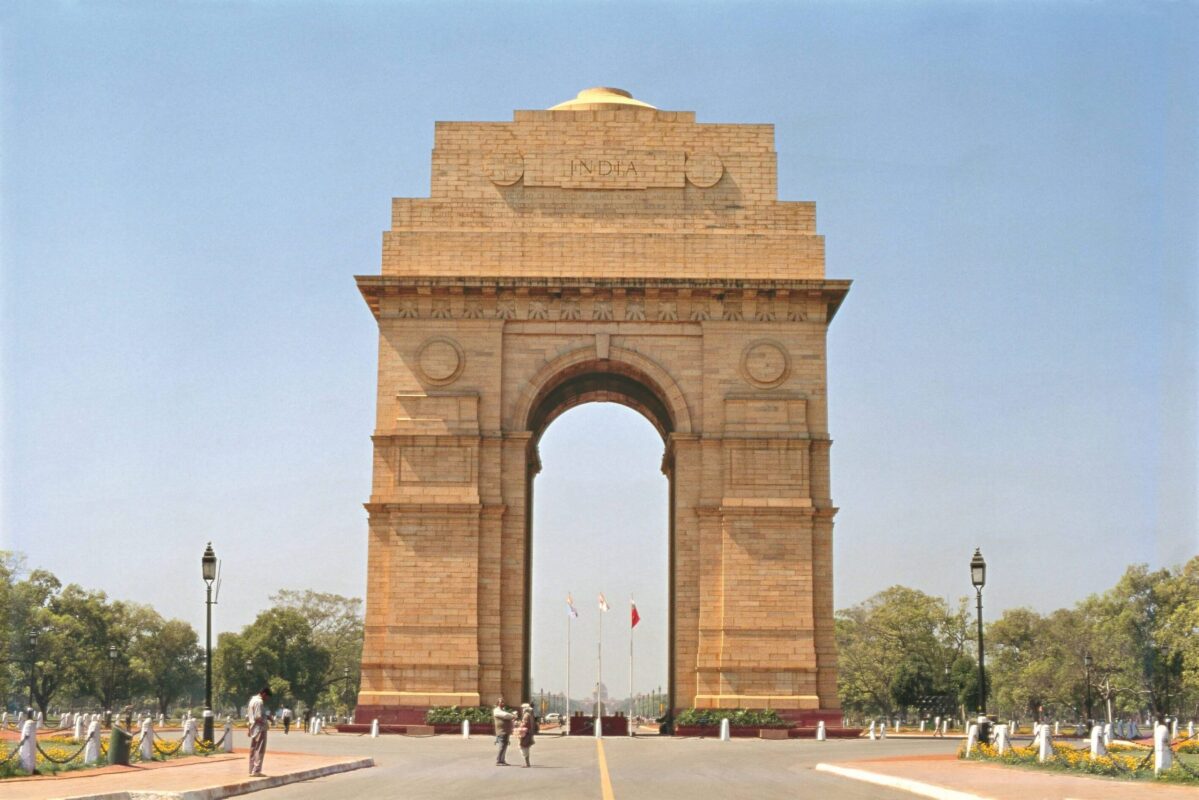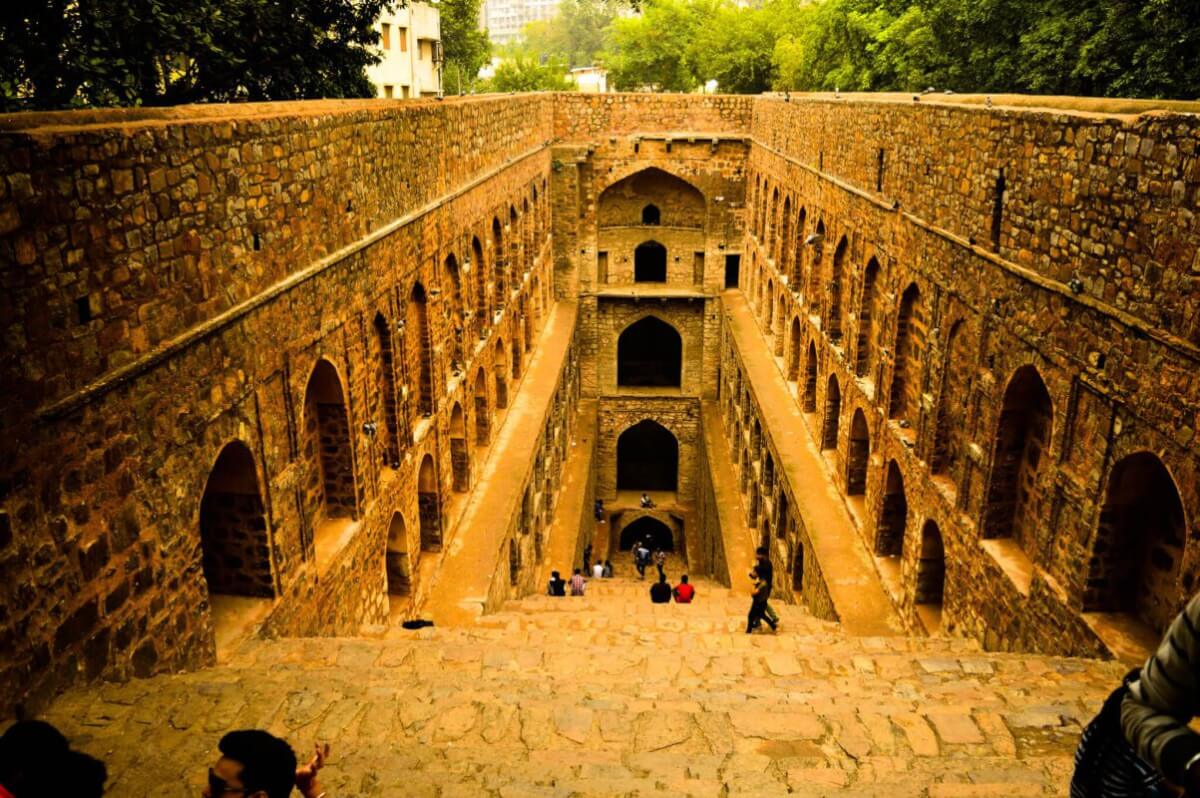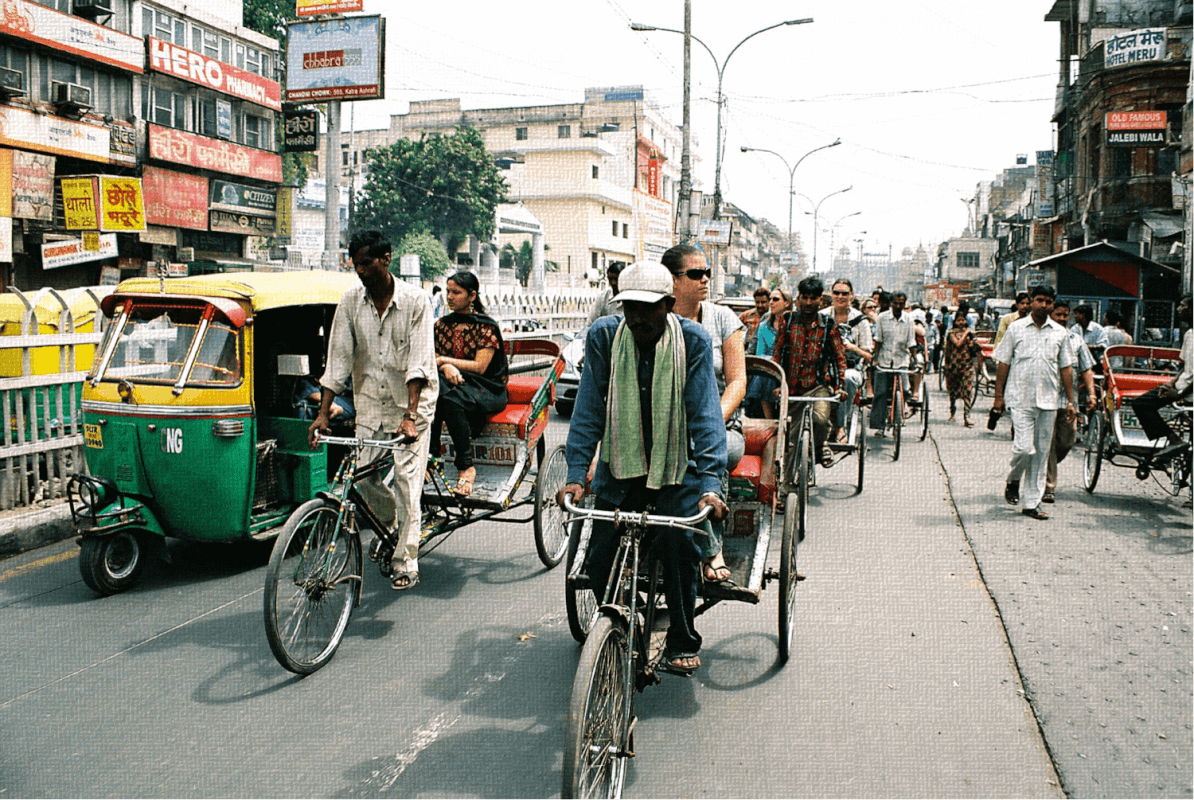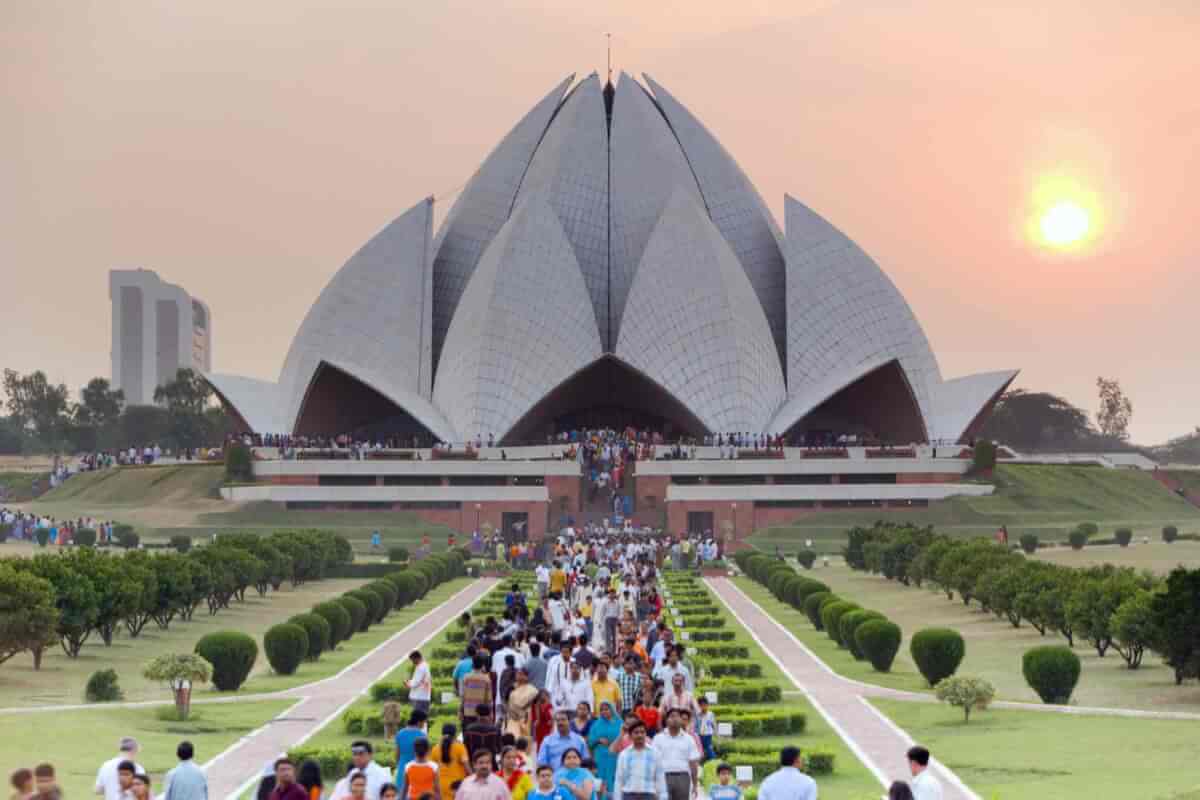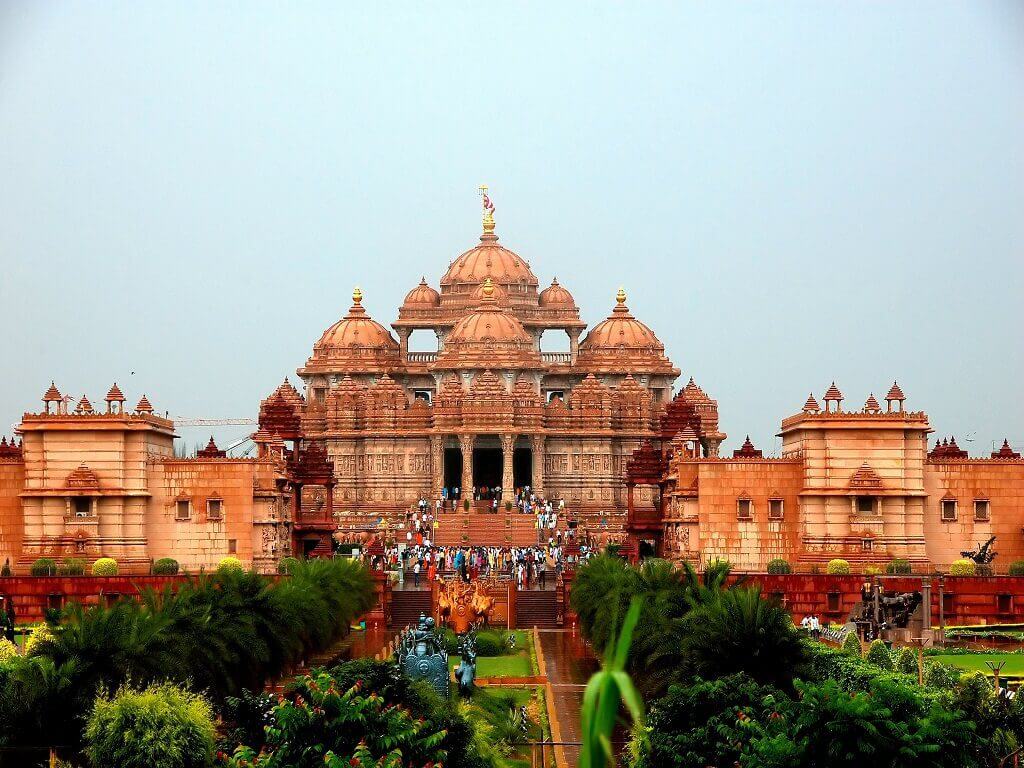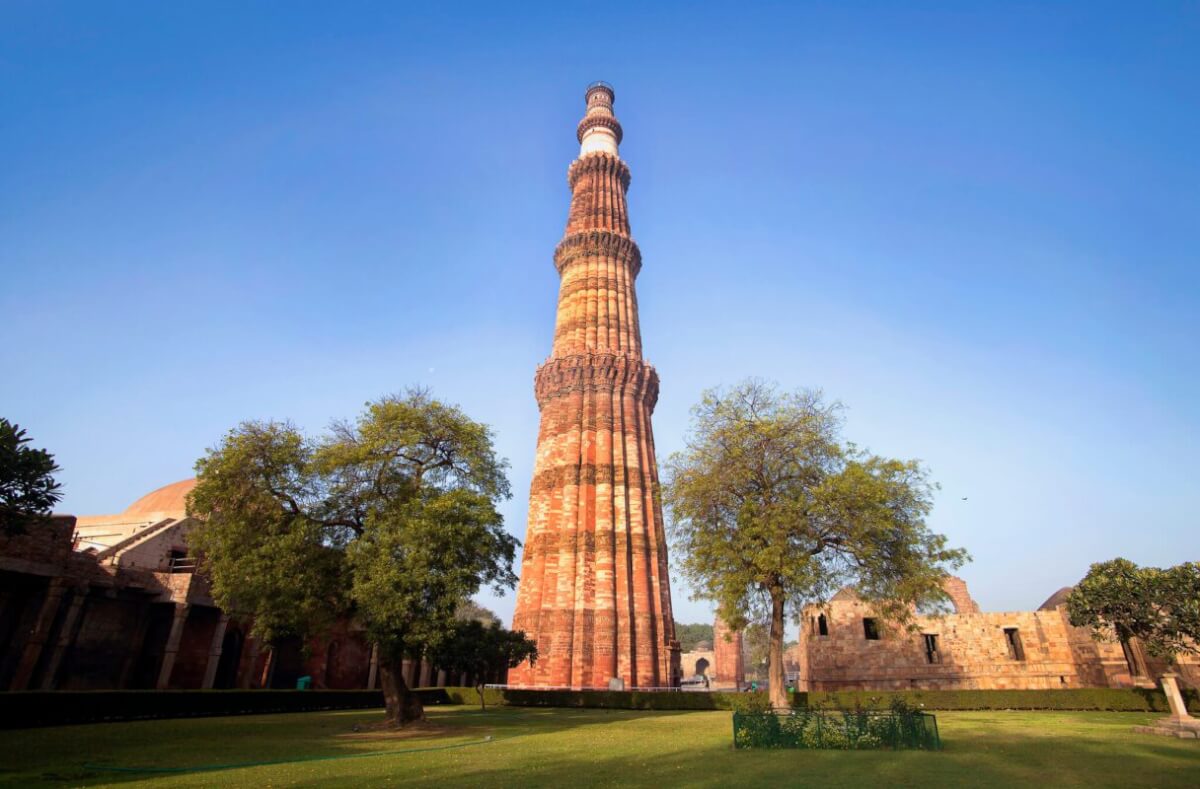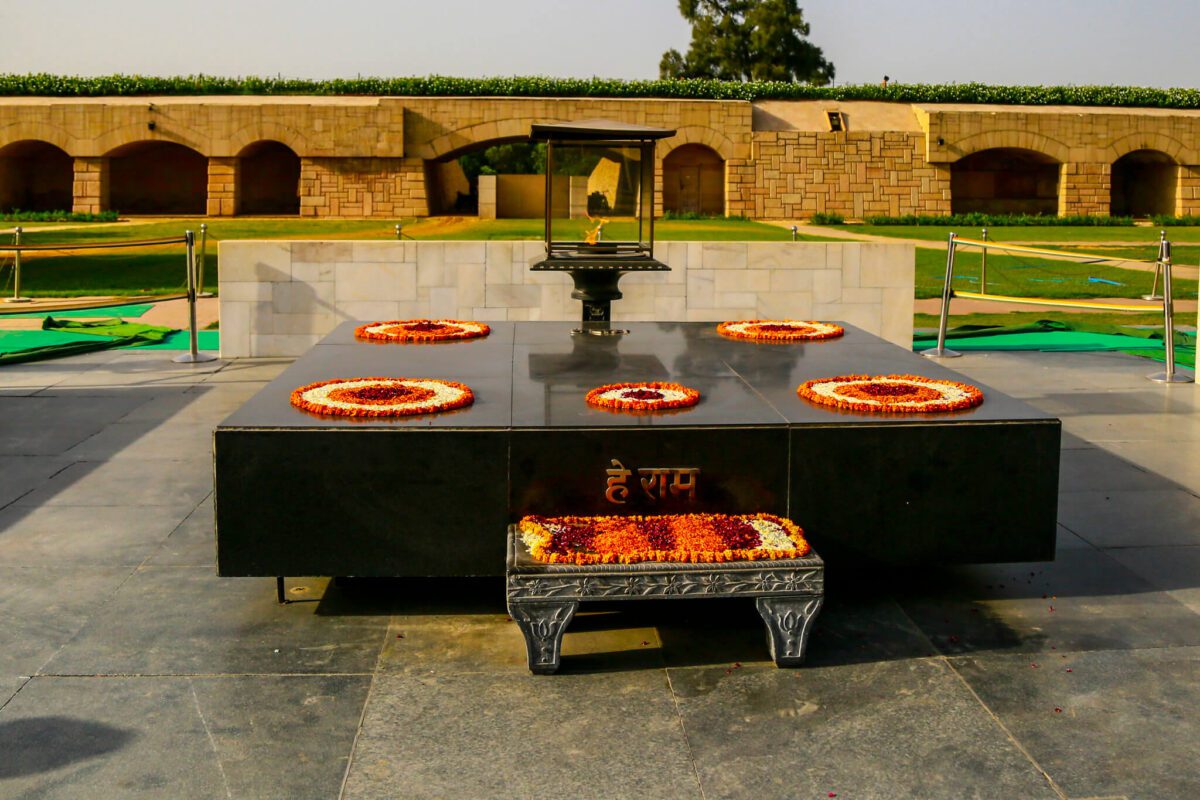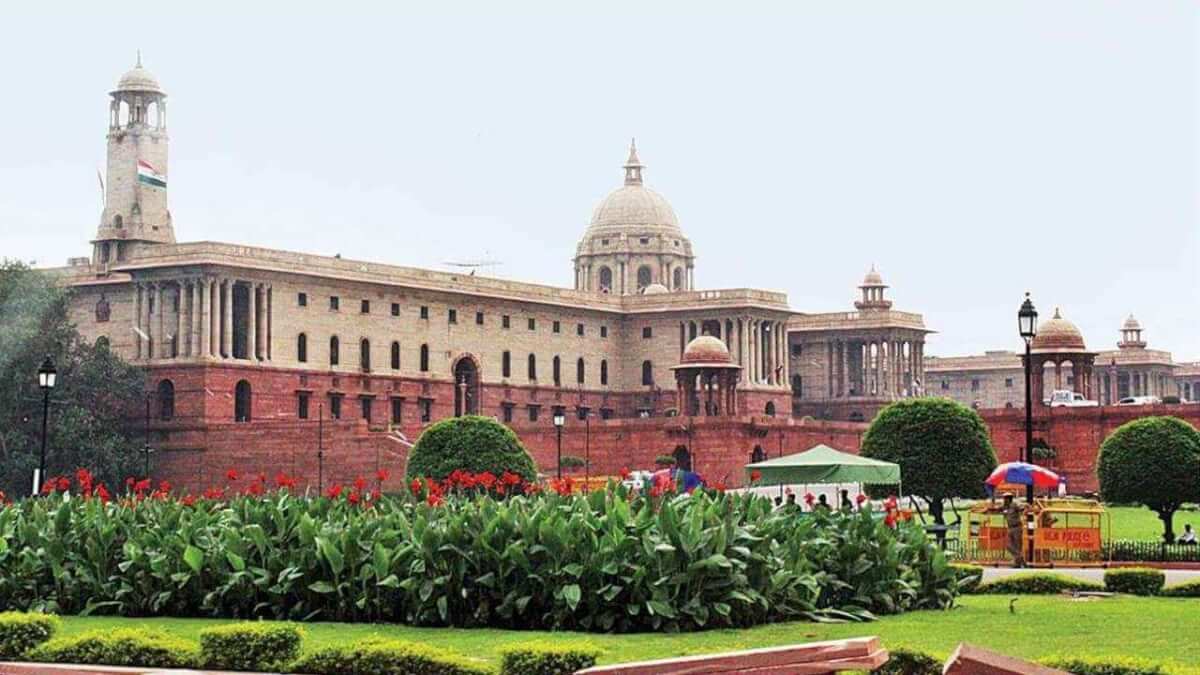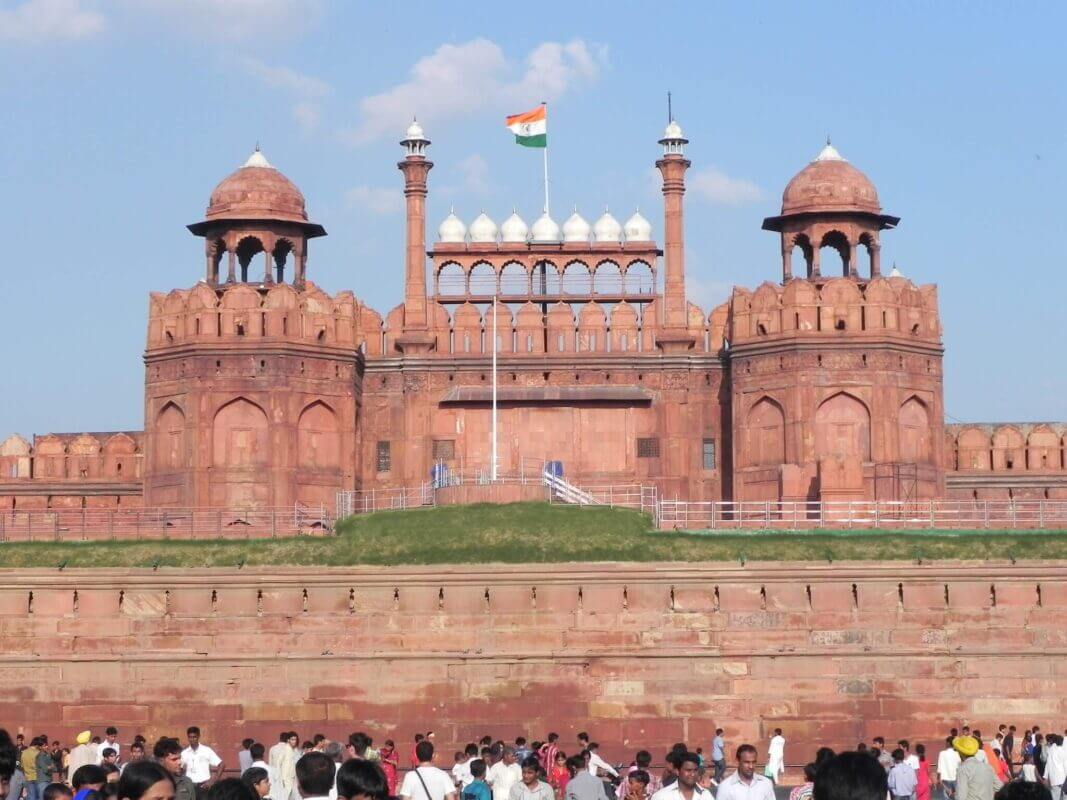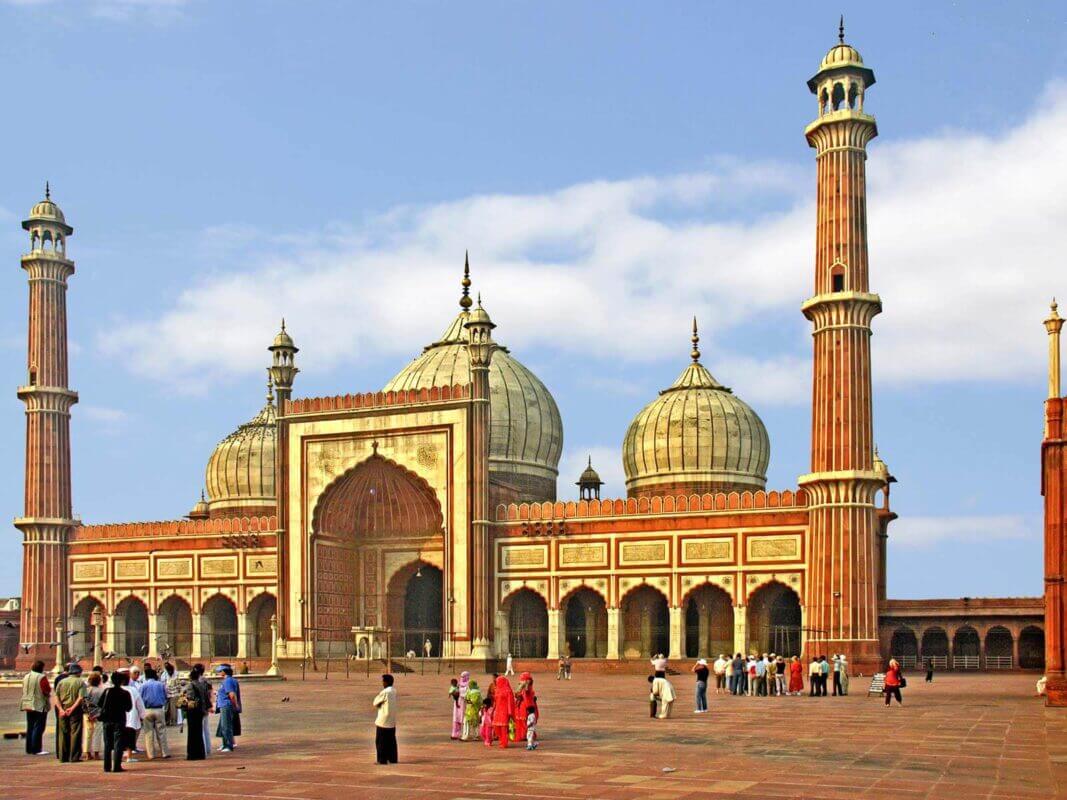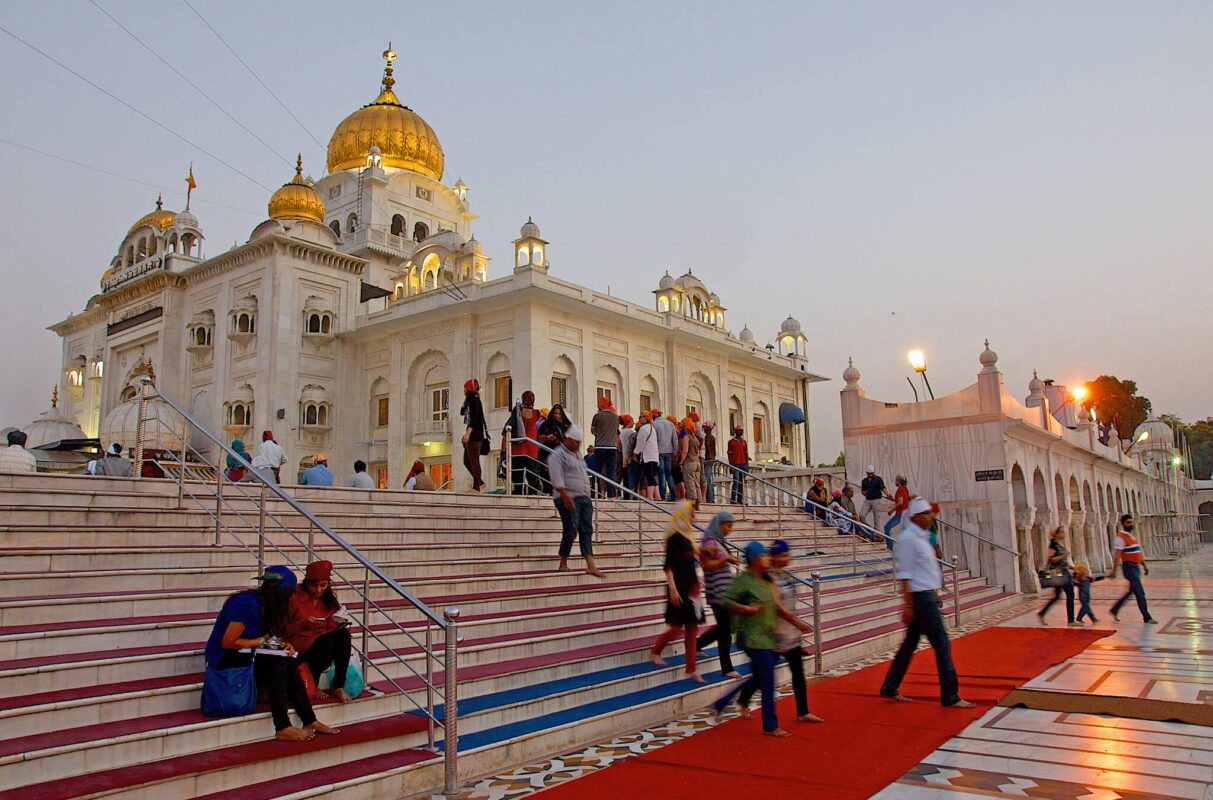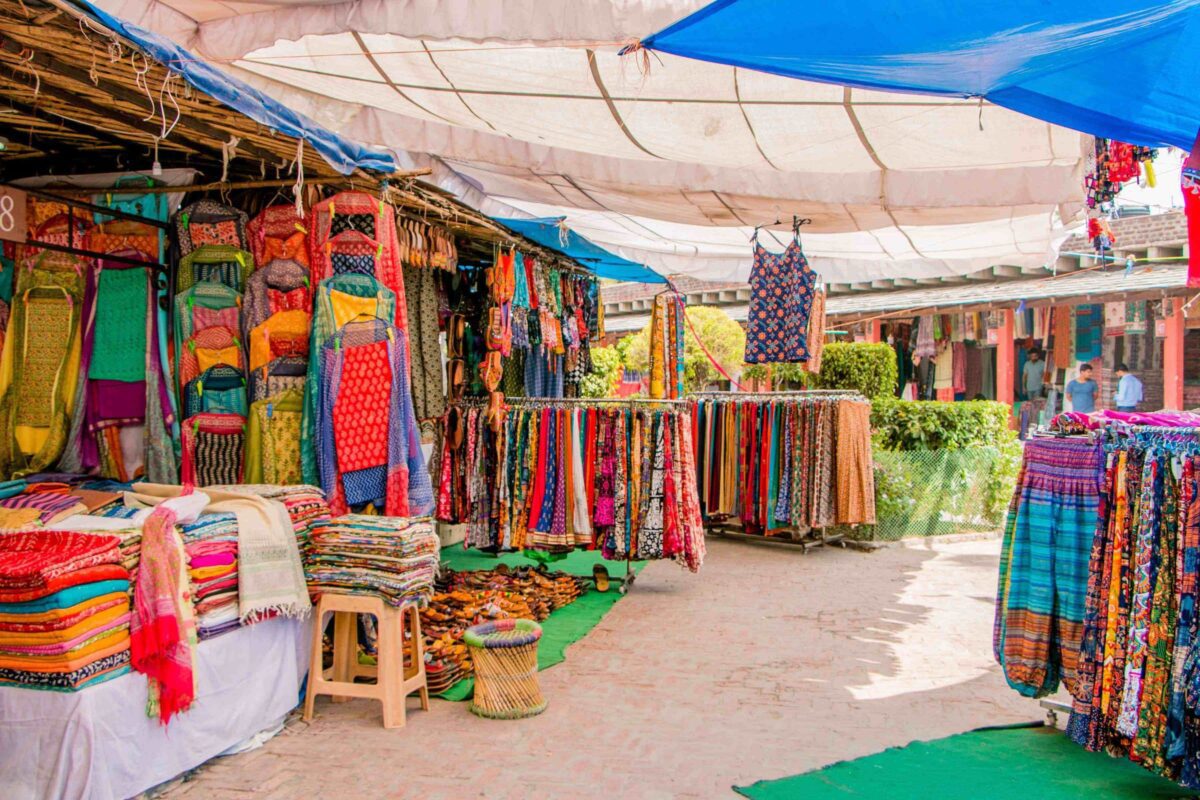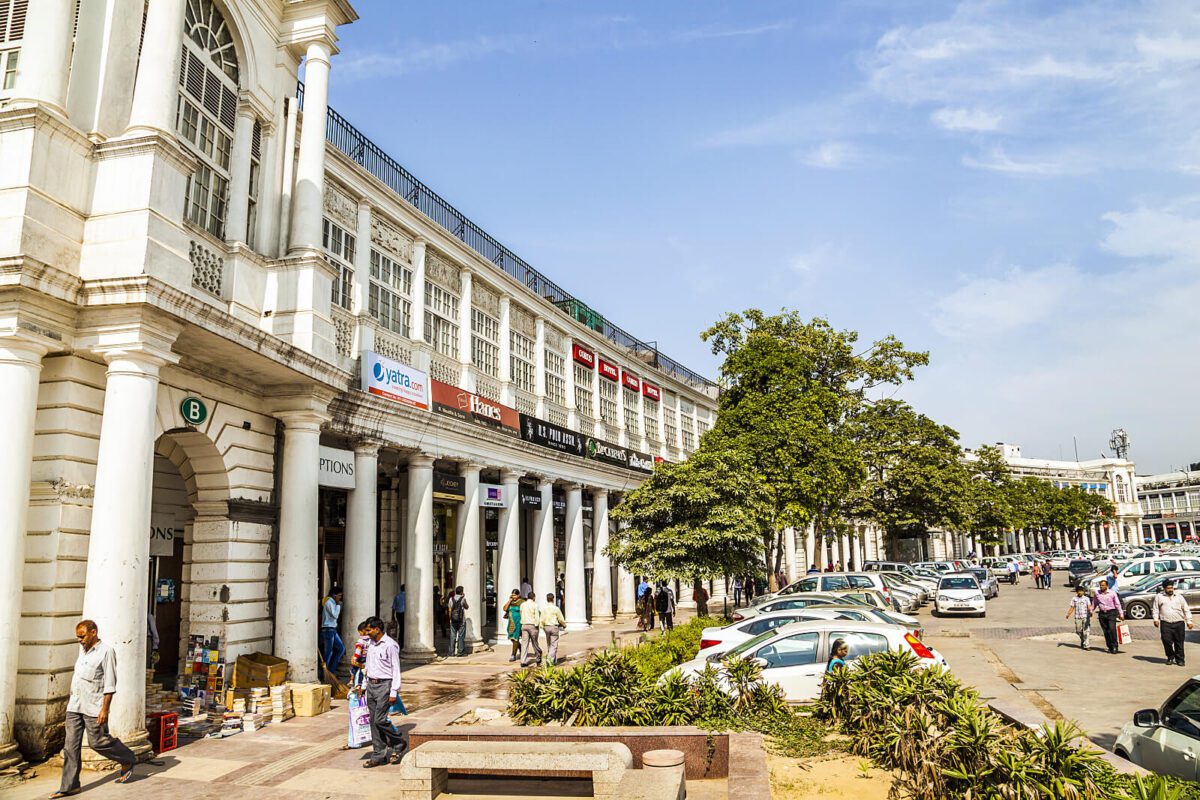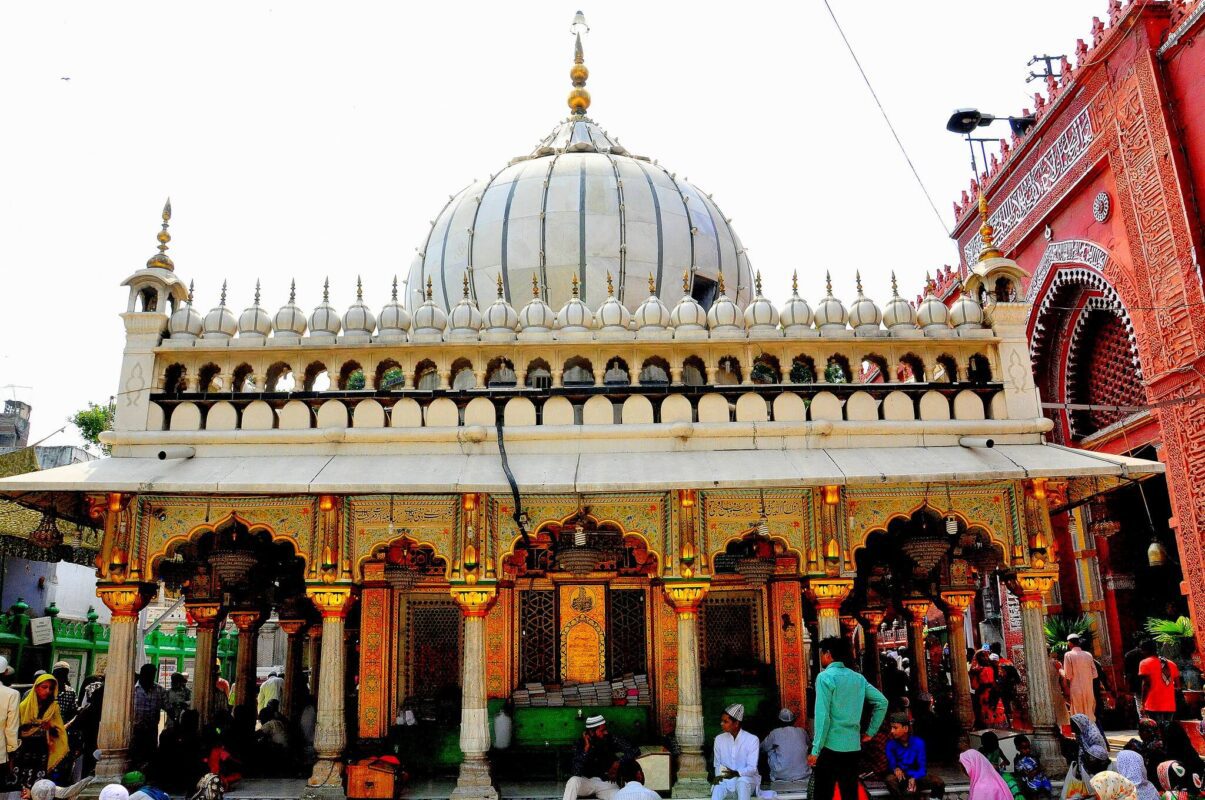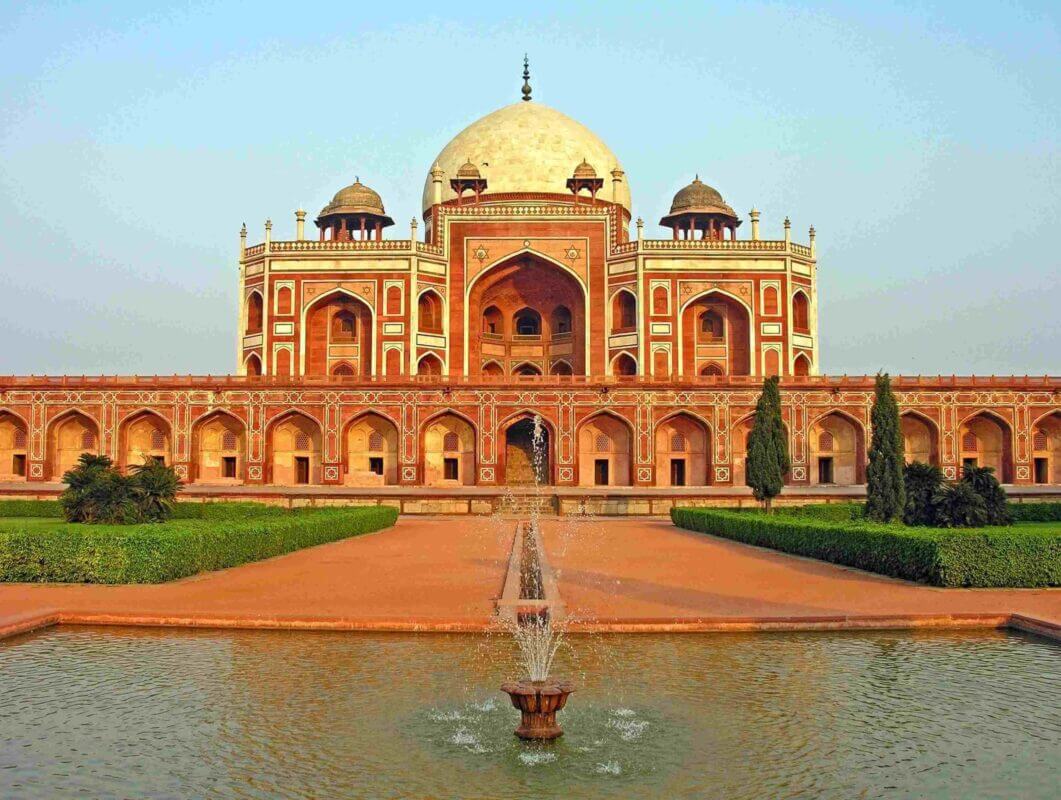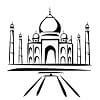- Home
- Holiday Ideas
-
-
- Choose Your Traveling Theme
-
- Adventure Tourism
-
- Cultural Tourism
-
- Tour Packages
-
-
- Packages by State
-
- Holidays by Interest
-
- Popular Tour Packages
-
- Fair And Festivals
-
- Ayurveda And Yoga
-
- Offers
-
- Destinations
-
Delhi
Delhi
Delhi is that the city which will surprise you initially but will soon engulf you during a string of latest experiences, leaving you entwined with its culture and other people. Ruled by a number of the foremost powerful emperors within the history of India, Delhi has transformed into a soulful city embracing each culture with open arms.
The capital of world’s largest democracy, Delhi as a city that bridges two contrasting worlds. While Delhi may be a labyrinth of mysterious narrow lanes, haveli’s and majestic mosques, the imperial city of latest Delhi consists of spacious, tree-lined avenues and imposing government buildings. The town has gradually evolved to become a window to India’s unique cultures and ethnicities.
The Rome, offers visitors a luxurious banquet of history and heritage seamlessly in tune with its transformation together of the world’s fastest growing and largest metropolises today. Monumental architecture here is evocative the creative genius of successive historical era. Delhi’s kaleidoscopic core is ripe for several more cinematic ventures to be staged here. From the opulent expanse of Delhi to urbane skyscrapers, tree lined avenues, undulating flyovers, ancient bazaars, and therefore the wonderful Delhi Metro, our city is that the visual spectacle like none other.
Delhi Tourism and Transportation Development Corporation Ltd. represent the government in promoting Delhi as a tourist destination. DTTDC facilitates tourists through its various mediums for all tourism related activities within the city.
Attractions
India Gate
A stunning archway standing as a tribute to the brave soldiers who sacrificed their lives for the country, India Gate is one among the landmarks of Delhi. Built with sandstone, this 42-m-high gate was the primary of its kind within the capital. The walls of the gateway are inscribed with the names of 13,516 soldiers killed within the Northwestern Frontier within the Afghan war of 1919, besides 90,000 soldiers of the Indian Army who were martyred in war I. the bottom of the monument is formed of red Bharatpur stones and therefore the structure of India Gate is analogous to France’s Arc- de- Triomphe.
India Gate is fringed by lush well-maintained lawns that act as a well-liked picnic venue for families. the simplest time to go to this monument is within the dark when it’s bathed in soft golden lights and glistens in the dark star-less sky.
The foundation stone of this grand monument was laid by the Duke of Connaught in 1921 and it had been designed by Edwin Lutyens. A decade later, the monument was dedicated to India by the then viceroy, Lord Irwin.
Amar Jawan Jyoti, made from marble, is found ahead of India Gate and was constructed within the year 1971. it had been built to pay tribute to the brave soldiers who lost their lives during the Indo-Pak War in December 1971. The flame is guarded by uniformed soldiers and a shining rifle crowned by a military helmet has also been kept near it.
India Gate also plays host to the awe-inspiring Republic Day Parade, when the President lays a wreath on the Amar Jawan Jyoti. After this, a grand parade is held along Rajpath and you’ll see contingents, tanks, vibrant floats, weapons all being conducted during a neat file. School children and folk dancers join the parade and add a cultural touch to the entire affair.
Agrasen ki Baoli
A quaint and serene spot amidst the bustle of Delhi, Agrasen-ki-baoli, gives a peek into the history of the capital. It’s a 60-m-long and a 15-m-wide historical step well. Its heritage character, intricate structure and tranquil ambience have endeared it to film-makers also and therefore the monument has often been a cinematic backdrop, featured in movies like Sultan and PK. As you descend the deep stepwell, you’ll suddenly feel the cool embrace you. It’d even send a chill down your spine as you recall that the monument was once believed to be haunted. Legend has it that the water within the baoli was said to be filled with sorcery and anyone who checked out it might get into a trance and jump to certain death. The baoli (step well) has 108 steps and three levels with arched niches on each side.
Today, it’s a protected monument by the Archaeological Survey of India (ASI). There are hardly any historical records to supply information about its creator but it’s believed that it had been built by legendary king Agrasen and rebuilt by the Agrawal community within the 14th century.
Chandni Chowk
Preserving the antiquity of Delhi, Chandni Chowk may be a bustling neighbourhood that’s one among the oldest within the capital . A vibrant bazaar that’s buzzing with activity, Chandni Chowk may be a labyrinth of narrow alleyways that are full of small shops, either selling delicious servings of snacks, sweets and savouries or offering budgeted deals on a number of products, including clothes. This medieval shopping site is stocked almost everything under the sun, and you’ll get a fine selection of perfumes, jewellery, electronics, candles, lifestyle goods and idols of gods and goddesses. Moreover, it also plays host to at least one of the most important wholesale markets in Delhi, during which visitors can get huge discounts on several items.
Chandni Chowk is probably hottest for its food, which was relished by personalities like Nehru , Gandhi , Atal Behari Vajpayee, et al. . As you explore the culinary riches of the market, start with the Old Famous Jalebi Wala, near the metro station. Sample piping hot soft and syrupy jalebis as you soak in Delhi winters. Food lovers can head to the Paranthe Wali Gali for an immersive experience. A noodle-thin lane lined with shops selling fresh and hot paranthas (stuffed flatbread), it’s a must-visit. Next comes kachori-aloo (deep-fried pastry served with potato gravy) and dahi bhalla (deep-fried snack served with yoghurt). If you’re visiting in summers, a tall glass of spiced lemonade never goes amiss. A highlight of the food scene of Chandni Chowk is rabri faluda (a sweet thick milk dish served with vermicelli). Many of the shops here are quite 100 years old and preserve a taste of medieval Delhi that creates one fall crazy with the place.
Chandni Chowk was constructed by Mughal emperor Shah Jahan within the 17th century. Sprawled right opposite to the Red Fort, it provides a fine view of the Fatehpuri Mosque.
The name “Chandni Chowk”means moonlight place and therefore the market is named so as during the rule of Shah Jahan, the world had a tree-lined canal, which reflected the moon.
Bahai Lotus Temple
Built in the form of a big lotus, the Bahai Lotus Temple may be a serene stopover that invites tourists from far and wide. It belongs to the Bahai religion, which aims at the unity of all the races and other people during a universal cause and a standard faith. People from all religions and faith can enter this temple, no matter their gender, and may chant their respective religious mantras. Designed by Iranian-Canadian architect, Fariburz Sahba in 1986, the temple is formed sort of a lotus flower with 27 white marble petals. There are nine doors that open into a central hall that’s approximately 40 m high and features a capacity to host 2,500 people. There are nine pools of water that look breathtaking at dusk. The temple is legendary everywhere the planet for its architectural design.
Akshardham
Holding the Guinness World Records because the world’s largest comprehensive Hindu temple, the Akshardham temple complex may be a stunning piece of architecture. Sprawled over a huge area, the complex seems like a splendid Celestial City when viewed from above. The temple itself has been constructed in pink sandstone and marble and is laid amidst neatly manicured lawns, pristine waterfronts and open courtyards. It been designed within the traditional Hindu sort of architecture and follows vaastu shastra and pancharatra shastra. As you stroll along the breathtaking complex, you’ll spot intricate carvings of animals, flowers, dancers, musicians and deities that adorn the walls. It’s said that the stone utilized in the development of the temple was brought from Rajasthan and weighed about 6,000 tonne. The Italian Carrara marble utilized in the structure adds to the sweetness of the grand temple.
Some interesting features of the temple are a musical fountain, the Sahaj Anand Water Show at Yagnapurush Kund and therefore the breathtaking Light and Sound Show. Starting at 7:30 pm, the show narrates stories from ancient Hindu scriptures. It’s a spectacular rendition that uses colourful lasers, underwater flames, water jets and video projections.
The temple stands at a height of 140 ft and features a width of about 300 ft. It hosts 234 beautifully carved pillars, along side nine elaborately inscribed domes. The temple premises hold around 20,000 idols of Hindu deities, and therefore the main shrine is that of Lord Swaminarayan. An 11-foot-tall idol of the god stands below the central dome. Interestingly, each statue at Akshardham is made with five metals called panch dhaatu. It also contains 148 statues of elephants that weigh over 3,000 tonne.
The temple is often accessed via 10 gates that symbolise 10 directions. The most gates are Bhakti Dwar or the gate of devotion. Akshardham was inaugurated on November 6, 2005. Quite 8,000 volunteers across the planet joined hands in building the temple.
Qutub Minar
Almost as old because the history of the Delhi Sultanate, the long-lasting Qutub Minar, the world’s tallest brick minaret, dominates the skyline of the town. Standing 73 foot tall, this five-storeyed tower, a UNESCO World Heritage Site, remains one among the foremost magnificent buildings of India from the medieval era. The primary three storeys of the tower are inbuilt red sandstone while the fourth and fifth are made from marble and sandstone. All the five floors are adorned with projecting balconies.
Located in Delhi’s Mehrauli area, the Qutub Minar was commissioned by Qutub-ud-din Aibak, who laid the inspiration of Mamluk dynasty (1206-1290) in India. Inspired by the victory tower at Ghazni, Afghanistan, its construction began in 1192 AD but, unfortunately, Qutub-ud-din-Aibak, didn’t live long enough to witness its completion. The tower was finally completed by his successors Iltutmish and Firoz Shah Tughlaq.
Another attraction here is that the Quwwat-ul-Islam Mosque that stands right next to the minaret. Constructed by Qutub-ud-din-Aibak, the mosque is taken into account to be the primary building within the Qutub complex that houses variety of monuments. One among the foremost popular among these is that the Iron Pillar, also referred to as the Ashoka Pillar, which dates back to the 4th century. Standing around 24 ft high and weighing quite six tonne, the pillar is legendary for its high resistance to corrosion. It’s a well-liked belief among tourists visiting the complex that if you’ll encircle the pillar together with your |along with your”> together with your arms while standing with your back thereto, any wish you create are going to be fulfilled. An example of this will be seen during a scene from Hindi movie Cheeni Kum, which starred legendary actor Amitabh Bachchan.
Tourists also can visit the Alai Darwaza, which may be a domed gateway built with red sandstone and adorned with white marble inlays. Built by Allauddin Khalji, this grand monument stands as a testament to the craftsmanship of the skilled Turkish artisans who built it. In close proximity stands the Alai Minar, commissioned by Alauddin Khalji, who wanted it to be twice as high because the Qutub Minar. Unfortunately, the development of the tower was stalled following the death of Khalji in 1316. Today, enormous rubble masonry of the tower’s first storey is often seen at the spot, which was intended to be covered with a layer of stone. The tomb of Iltutmish was built by the emperor himself and was one among the primary tombs to be inbuilt Delhi.
Tourists also can head to the Mehrauli Archaeological Park that houses the ultimate resting place of Ghiyas-ud-din Balban, who was once the ruler of the Delhi Sultanate. Within the Qutub complex lies the Jamali Kamali Mosque and a tomb of a Sufi saint. The three-day Qutub Festival held within the months of November and December, features classical dance and music, and is real crowd puller.
Raj Ghat
Built in the memory of Mohandas Karamchand Gandhi, who is revered because the Father of the state, Raj Ghat may be a marble platform where he was cremated on January 31, 1948. Lying on the banks of the Yamuna River, Rajghat is fringed by lush well-manicured lawns that are dotted with trees. The mortal remains of Gandhiji were cremated at this ghat.
The samadhi may be a true reflection of the person himself and exudes a simplicity that he came to be related to. A brick platform where his body was burned and a black marble platform are surrounded by a marble fence. The words ‘He Ram’, which was the last item Gandhiji said, are inscribed on the memorial. Endless flame stands adjacent thereto.
Various trees that dot the landscape are planted by dignitaries like Queen Elizabeth, former US president Eisenhower , former Australian Prime Minister Gough Whitman etc., and bear their names on a plaque.
Visitors are required to get rid of their shoes before paying homage to the leader. A ceremony is held every Friday to mark the day he died. There are two museums nearby, which are dedicated to Gandhiji.
The memorial was designed by Vanu G Bhuta, and this national shrine was bestowed with variety of awards for its architectural design. The memorials of varied other leaders like Lal Bahadur Shashtri, Gandhi , Jawaharalal Nehru, Rajiv Gandhi and Sanjay Gandhi also are located inside Raj Ghat.
Rashtrapati Bhawan
The official residence of the President of India, Rashtrapati Bhawan is that the most prominent landmark of Delhi. Inbuilt the Edwardian baroque sort of architecture, the building is adorned with classical motifs that symbolise legacy and authority. Rashtrapati Bhawan is cover a neighborhood of 321 acre and boasts 340 rooms, including guest rooms, reception halls, offices, stables and residences for workers and bodyguards.
Rashtrapati Bhawan was constructed in 1929 and is additionally called Presidential Residence and Viceroy’s House. Earlier, it had been the residence of British viceroy. This architectural marvel was constructed in 17 years. Rashtrapati Bhawan was designed by Edward Lutyens and Herbert Baker. The famous Mughal Gardens of the Bhawan are cover 15 acre of land and has 159 sorts of roses, 60 sorts of bougainvillea and lots of other sorts of flowers. The Rashtrapati Bhawan Museum Complex (RBMC) also makes for a stimulating visit. A serious highlight is an old Presidential buggy which will be seen drawn by life-size horses. You’ll also admire a Mercedes car gifted to the previous Prime Minister Rajiv Gandhi by the king of Jordan. To urge a better check out history, tourists can see rare photographs of the Bhawan and therefore the freedom movement that are displayed on a table. A Gift’s Counter within the premises shows the presents received by the President from different parts of the planet. Tourists would be particularly entranced by a special square box that has 3-D holographic images, which are played alongside the speeches of varied Presidents. Several windows within the museum show personal belongings of the Presidents.
Much before the political heads of the country, Gandhi visited Rashtrapati Bhawan in 1931, when he was invited by Lord Irwin wherein he took a pinch of salt with him as a mark of protest against British. The meeting finally led to the Gandhi-Irwin Pact of 1931.
Red Fort
Lying at the guts of Delhi, the majestic Red Fort, made from fine red sandstone, stands as a testament to the architectural legacy of the Mughals. one among the foremost beautiful monuments within the world, this UNESCO World Heritage Site, famous as qila-e-mubaraq, is replete with palaces, pavilions and mosques.
Built by Mughal emperor Shah Jahan because the palace fort of his capital Shahjahanabad, Red Fort is legendary for its massive enclosing walls. The architecture of the fort reflects a seamless fusion of Islamic, Persian, Timurid and Hindu styles. The main attractions are the Diwan-i-khas, also referred to as the Shah Mahal, the Diwan-i-aam or the Hall of Public Audience and therefore the Rang Mahal (a a part of the harem), also referred to as Imtiyaz Mahal. The opposite monuments here are the Naubat Khana (Drum House), where royal musicians played and announced the arrival of royalty members; the hammam (royal bath), and therefore the Muthamman Burj, or Musaman Burj (a tower where the emperor would show himself to his subjects). Once the facility of the Mughals weakend, the fort was plundered by the Persians, led by Nadir Shah, in 1739. The invaders took away much of the fort’s treasures, including the opulent Peacock Throne, which Shah Jahan had crafted out of gold and gemstones (including the valuable Kohinoor diamond).
Besides the monuments, a serious draw for tourists today is Son et Lumiere, a sound and lightweight show, which is held every evening. The enchanting one-hour long show traces the Mughal empire’s history in India and offers a glimpse of their glorious past also because the eventful phases that led to their downfall. The narration has been recorded by legendary actor Amitabh Bachchan, which makes the show absolutely engaging.
The entrance to the fort is thru the Lahore Gate that results in the shopping area called Chatta Chowk. The Chowk, an arched passageway which won’t to house royal tailors and merchants, is lined with stores selling ethnic handicrafts and apparels from different parts of the country. Not many know that the Red Fort also houses several military barracks, which were raised by British. Made in red and white sandstone, the barracks stand as fine specimen of colonial architecture and one is instantly hooked in to their old world charm. Dating back to 1857, the barracks were built to deal with British army after it had dethroned Bahadur Shah Zafar, the last Mughal emperor. After British reign ended, the barracks were wont to house Indian Army personnel and it had been only in 2003 that the military vacated them. Today, a number of these barracks are became museums and art galleries, with the support of the Archaeological Survey of India (ASI).
The fact that the Indian Prime Minister hoists the ensign from the ramparts of the Lahore Gate per annum on Independence Day, makes the Red Fort among the foremost significant monuments of the country. Its innovative planning and brilliant architecture has inspired variety of monuments in Rajasthan, Delhi and Agra also.
A visit to the historic fort offers a quintessential experience of the bygone era of Delhi.
The fort’s construction was completed over a span of 10 years (1638-48). It once overlooked the Yamuna River, which has moved away over the course of your time. Historians also suggest that a tree-lined waterway, which was called nahr-i-bihisht or river of paradise, ran out of the fort and its water was sourced from the Yamuna.Lying at the guts of Delhi, the majestic Red Fort, made from fine red sandstone, stands as a testament to the architectural legacy of Mughals. One among the foremost beautiful monuments within the world, this UNESCO World Heritage Site, famous as qila-e-mubaraq, is replete with beautiful mosques, palaces and pavilions.
Built by Mughal emperor Shah Jahan because the palace fort of his capital Shahjahanabad, Red Fort is legendary for its massive enclosing walls. The architecture of the fort reflects a seamless fusion of Islamic, Persian, Timurid and Hindu styles. The main attractions are the diwan-i-khas, also referred to as the Shah Mahal, the diwan-i-aam or the Hall of Public Audience and therefore the Rang Mahal, also referred to as the Imtiyaz Mahal. A serious draw for tourists is Son et Lumiere, a sound and lightweight show, which is held every evening. The enchanting one-hour long show traces the Mughal Empire’s history in India and offers a glimpse of their glorious past also because the eventful phases that led to their downfall. The narration has been recorded by legendary actor Amitabh Bachchan, which makes the show absolutely engaging.
Tourists also can visit the shopping area called Chatta Chowk, which may be reached through the Lahore Gate, the most entrance gate of the fort. The market space is lined with stores selling ethnic handicrafts and apparels from different parts of the country. Not many know that the Red Fort also houses several military barracks, which were raised by British. Made in red and white sandstone, the barracks stand as fine specimen of colonial architecture and one is instantly hooked in to their old world charm. Dating back to 1857, the barracks were built to deal with British army after it had dethroned Bahadur Shah Zafar, the last Mughal emperor. After British reign ended, the barracks were wont to house Indian Army personnel and it had been only in 2003 that the military vacated them. Today, these barracks are getting used as museums of art with the support of the Archaeological Survey of India (ASI).
The fact that the Indian Prime Minister hoists the ensign on the ramparts of the Lahore gate per annum on Independence Day makes the Red Fort among the foremost significant monuments of the country. Its innovative planning and brilliant architecture has inspired variety of monuments in Rajasthan, Delhi and Agra.
A visit to the historic fort makes for a quintessential Delhi experience and offers tourists an opportunity to understand the grandeur of the bygone era.
The fort’s construction was completed over a span of ten years (1638-48). It once overlooked the Yamuna River, which has shrunken away over the course of your time. Historians also suggest that a tree-lined waterway, which was called nahr-i-bihisht or river of paradise, ran out of the fort and its water was sourced from River Yamuna.
Jama Masjid
One of the most important mosques in India, Jama Masjid is situated in Delhi. Its construction was started in 1644 and completed by Mughal emperor Shah Jahan. Made from red sandstone and marble, this gorgeous mosque is additionally called Masjid-I-Jahanuma, meaning the mosque commanding the view of the planet. The courtyard of the mosque has been built with red sandstone and may be accessed from the north, the south and therefore the east, via flights of stairs that were once venues for house markets, food stalls and entertainers. The courtyard is so huge that it can easily accommodate 25,000 devotees at just one occasion. Jama Masjid has been built on an elevation of 10 m and has three gates, two 40-m-high minarets and 4 towers. From the tower, one can get a splendid view of bustling streets of Delhi.
The mosque houses many relics of Prophet Mohammad and draws devotees from far and wide. a number of these relics include a Quran written on deerskin, sandals and a footprint of the Prophet embedded during a marble slab, and a red hair, which is claimed to possess been from his beard.
Jama Masjid was designed by Ostad Khalil, a renowned Mughal architect. Legend has it that the eastern gate of the mosque was meant for the royalty within the olden days.
The best time to go to the mosque is during the festivities of Id-ul-Fitr and Id-ul-Zoha, when it’s resplendent as a bride and is thronged by devotees from everywhere the country.
It is said that Lutyens incorporated the mosque into his design in such how that the mosque along side Connaught Place and therefore the Parliament House falls in direct line of sight. Tourists aren’t allowed within the mosque during prayers and while the entry is free, one will need to buy carrying a camera into the premises.
Gurudwara Bangla Sahib
A quiet and serene spot amid the bustling marketplace, Gurudwara Bangla Sahib is possibly the foremost popular attraction of Connaught Place. You’ll spot it from a short time away as its high golden dome glistens within the sun. As you enter the premises you’ll be enveloped during a sense of peace. After paying homage at the sanctum, where the holy book is kept, you’ll stroll along the tranquil pond within the Gurudwara. Other prominent features are a cooking area, an enormous gallery and a faculty. A langar (holy food) is obtainable to devotees who come to go to.
Legend has it that the Gurudwara area was once Jaisinghpura Palace, the residence of Raja Jai Singh, the ruler of Amber. It’s said that in 1664, the eight Gurus of the Sikhs, Guru Har Krishan Sahib, stayed during this palace.
Dilli Haat
Dilli Haat may be a blend of cultural extravaganza, crafts and food. It’s a singular bazaar within the heart of the town that displays the richness of Indian culture. One can purchase variety of traditional and ethnic items from the market. Not only that, the haat offers some delicious food items at cost effective prices. You’ll visit the varied food stalls found out by individual states of India that serve authentic delicacies native to their region. Visiting the haat may be a unique experience because it gives you a taste of the cultural heritage of every and each state of India. The bazaar also houses souvenir shops for visitors. A number of the things you’ll buy include brassware, metal crafts, gems, beads, silk and wool fabrics, embellished footwear, sandalwood and rosewood carvings etc.
Connaught Place
The heartbeat of Delhi, Connaught Place may be a heritage neighbourhood that has been modeled after the Georgian sort of architecture. Lined with a number of eateries, high-end stores, parlours, theatres and book stores, the market is that the hub of most activities in Delhi. Spread in two concentric circles, Connaught Place holds a vintage character that’s vividly contrasted by various cosmopolitan shops and cafes that are crowned with blaring neon signs. On any adieu, you’ll see variety of scholars and office workers spilling out on the streets and enjoying the pleasant weather while relishing a plate of chaat from a vendor.
Before stalls and stores took over Connaught Place, it won’t to be a cinema centre. Within the 1920s, Russian ballets, Urdu plays and silent films were hosted at various theatres here. Its heritage cinemas like Rivoli and Odeon still preserve their antiquity and it’s a fascinating experience to catch a movie in one among the sprawling movie theatres.
Another attraction in Connaught Place is that the Hanuman Temple that’s believed to be as old because the neighbourhood itself. Inviting devotees from far and wide, the temple finds mention within the epic Mahabharata also . It also holds the Guinness record for the worshippers having chanted the mantra “Sri Ram Jai Ram Jai Ram” continuously for twenty-four hours.
A quiet and serene spot amid the bustling marketplace, Gurudwara Bangla Sahib is possibly the foremost popular attraction of Connaught Place. you’ll spot it from a mile away as its high golden dome glistens within the sun. As you enter the premises you’ll be enveloped during a sense of peace. After paying homage at the sanctum, you’ll stroll along the tranquil pond within the Gurudwara. A sweeping expanse of pristine white adorned with intricate carvings, Gurudwara Bangla Sahib may be a must-visit spot.
Tourists also can head to Jantar Mantar, which is one among the five astronomical observatories in Northern India. Its striking combinations of geometric forms have caught the eye of architects, artists and art historians from round the world.
Central Park in Connaught Place is another attraction that holds a spread of cultural events. A lush garden dotted with fountains, it also has one among the very best hoisted flags within the country.
The grand ivory white structure of Connaught Place was made by British in 1929 to relocate to Lutyen’s Delhi. it’s been named after the primary Duke of Connaught, who was the son of Victoria . it’s one among the foremost expensive office spaces within the world and offers a singular blend of diversity to its visitors. From a historical structure to a shopper’s paradise, the place may be a must-visit on one’s trip to Delhi.
Hazrat Nizamuddin Dargah
One of the foremost prominent spiritual sites in Delhi, Hazrat Nizamuddin Dargah is that the shrine of Muslim sufi saint, Nizam-ud-din Auliya (1238 – 1325 AD). it’s a gorgeous structure comprising intricate jaalis (lattice screens) and a huge courtyard framed by marble arches. Dating back to the 14th century, this dargah has been inbuilt the Islamic sort of architecture. it’s a square-shaped building with a dome-shaped roof. a specific attraction may be a 13th century room, called Hujra-e-Qadeem, which makes for a stimulating visit.
The dargah draws devotees from far and wide and that they are often seen tying a red thread on the jaalis so their prayers are often answered. While performing the prayers, they also light incense sticks and shower rose petals. Offering a chadar (a large sheet of fabric) at the shrine is taken into account especially auspicious. the simplest time to go to the dargah is on Thursday, when qawwali performances are held within the evening. Such is its renown that the dargah has been a cinematic backdrop for several movies like Bajrangi Bhaijaan (2015) and Rockstar (2011).
Echoing with magic and mysticism, the dargah complex houses the tomb of Amir Khusrau, one among the best Urdu and Persian poets. Moreover, there are tombs of Jahanara Begum, Shah Jahan’s daughter; Atgah Khan, a nobleman whose wife served because the nurse of Mughal emperor Akbar and Muhammad Shah Rangila, a ruler of the 18th century.
Humayun Tomb
Surrounded by neatly manicured lawns, the huge Humayun’s Tomb may be a spectacular monument that was the primary garden mausoleum inbuilt the Indian subcontinent. the primary of the grand tombs synonymous with Mughal architecture, this monument narrates a timeless saga of affection and longing. Built by Mughal emperor Humayun’s first wife, empress Haji Begum, in her husband’s memory, the tomb houses the graves of both the emperor and his wife and stands as a testament to their eternal love. Designed by Persian architect Mirak Mirza Ghiyas, the imposing building invites tourists from all corners of the planet . As you enter the luxurious palm-lined lawns, you’re welcomed by a gorgeous fountain, which makes an excellent photography backdrop. The garden is further divided into four main sections by walkways and water channels; the planning synonymous with the Paradise Garden mentioned within the holy book of Islam, the Quran. The four main sections are sub-divided into 36 parts. One must rehearse majestic gates to succeed in the monument. Right before the last and final gate, a viewing gallery has been found out by the Archaeological Survey of India (ASI) that displays old pictures of the monument that reflect its grandeur. the most building is formed of red sandstone while the tomb is formed of white and black marble. a beautiful gate leads you to the central hall, which houses the tomb of Humayun. The hall is adorned with intricately carved windows and a beautifully designed ceiling. the massive platform is dotted with several tombs, including those of empress Haji Begum and prince Darah Shikoh. a stimulating fact about the monument is that it also houses the tomb of Humayun’s favourite barber. The monument was employed by the last Mughal emperor Bahadur Shah Zafar as a refuge before British captured and exiled him in 1857. To the proper of the complex is that the tomb of Isa Khan, a noble at the court of Sher Shah Suri. It depicts Lodi-era architecture and was constructed within the 16th century. The Humayun’s Tomb lies very on the brink of another popular attraction of Delhi, Hazrat Nizamuddin Dargah, a shrine built over the grave of the 14th century Sufi Saint Nizamuddin Auliya.
How to get there
By Air
The city is well-connected with all major cities of the country through domestic flights. Not only that, a major number of international flights operate from the Indira Gandhi International Airport at New Delhi.
Rail
The New Delhi Railway Station, Old Delhi Railway Station and Hazrat Nizamuddin Railway Station connect Delhi to major cities of the country.
By Road
The city is well-connected by a network of roads and national highways across the major cities of the country. Inter State Bus Terminus (ISBT) at Kashmiri Gate, Sarai Kale-Khan Bus Terminus and Anand Vihar Bus Terminus are the main bus stands of Delhi.
WANT TO RENT A CAR IN INDIA ?
Choose Your Traveling Theme



